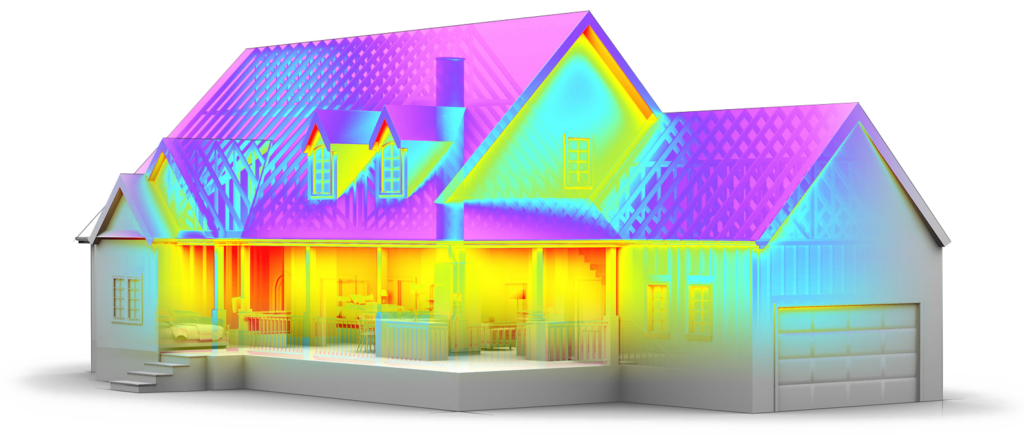Infrared Thermal Imaging Inspection
Thermal Imaging Inspection is an advanced, non-invasive technology that enables an inspector to detect problems in a property that can not be identified through conventional inspection methods. It is a special type of photography which has many uses, including in the property inspection world.
Thermal Imaging Inspection in a property inspection can help detect various types of leaks, ventilation issues, insulation gaps and energy loss through heat signatures rather than light. This means an inspector is able to see things that otherwise might be hidden or invisible to the naked eye.
Our eyes are light detectors and represent the world we see as colors, but our eyes only detect a very small part of the electromagnetic light spectrum, known as visible light. There are, however, other wavelengths, parts of the spectrum that are invisible to our eyes such as infrared.
The Infra-red part of the electromagnetic spectrum lies between visible light and microwaves, which are invisible to the human eye.
Thermal imaging cameras are specifically designed to capture infra-red radiation waves and display them as a visual image. When displayed, temperature differences are visible, warm objects stand out against cooler objects or backgrounds.
An infrared inspection (IR) can identify and document moisture intrusion, unexpected hot spots, and even energy loss.

In terms of detecting moisture intrusion, an IR camera can locate:
- plumbing leaks;
- hidden roof leaks before they cause serious damage or to locate where the existing damage has originated from;
- missing, damaged, and/or wet insulation;
- including water/moisture intrusion around penetrations, foundation, and building envelope that could lead to structural damage and/or mold.
IR cameras are equally effective at locating hot spots in the home, including:
- circuit breakers in need of immediate replacement;
- overloaded or undersized circuits;
- overheated electrical equipment and components;
- including electrical faults before they could cause a fire.
In terms of energy loss, an IR camera can detect:
- heat loss and air infiltration in walls, ceilings, floors, windows and doors;
- damaged and/or malfunctioning radiant heating systems;
- air-conditioner compressor leaks;
- under-fastening and/or missing framing members, and other structural defects that can lead to energy loss;
- including broken seals contained in double-paned windows.


